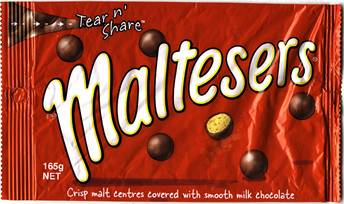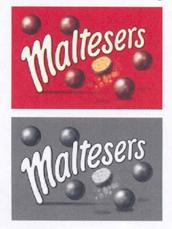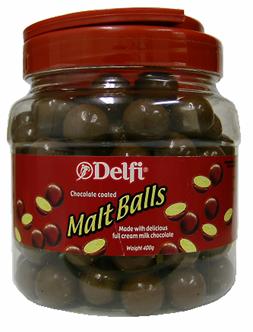FEDERAL COURT OF AUSTRALIA
Mars Australia Pty Ltd v Sweet Rewards Pty Ltd [2009] FCAFC 174
Trade Marks Act 1995 (Cth) ss 10, 17, 120(1)
Trade Practices Act 1974 (Cth) ss 52, 53
Mars Australia Pty Ltd v Sweet Rewards Pty Ltd (2009) 81 IPR 354 affirmed
MARS AUSTRALIA PTY LTD v SWEET REWARDS PTY LTD
NSD 620 of 2009
EMMETT, BENNETT AND EDMONDS JJ
11 DECEMBER 2009
SYDNEY
|
IN THE FEDERAL COURT OF AUSTRALIA |
|
|
NEW SOUTH WALES DISTRICT REGISTRY general division |
NSD 620 of 2009 |
|
ON APPEAL FROM THE FEDERAL COURT |
|
MARS AUSTRALIA PTY LTD Appellant
|
|
|
AND: |
SWEET REWARDS PTY LTD Respondent
|
|
JUDGES: |
EMMETT, BENNETT AND EDMONDS JJ |
|
DATE OF ORDER: |
11 DECEMBER 2009 |
|
WHERE MADE: |
SYDNEY |
THE COURT ORDERS THAT:
1. The appeal be dismissed.
2. The appellant pay the respondent’s costs of the appeal.
Note: Settlement and entry of orders is dealt with in Order 36 of the Federal Court Rules.
The text of entered orders can be located using eSearch on the Court’s website.
|
IN THE FEDERAL COURT OF AUSTRALIA |
|
|
NEW SOUTH WALES DISTRICT REGISTRY general division |
NSD 620 of 2009 |
|
ON APPEAL FROM THE FEDERAL COURT |
|
BETWEEN: |
MARS AUSTRALIA PTY LTD Appellant
|
|
AND: |
SWEET REWARDS PTY LTD Respondent
|
|
JUDGES: |
EMMETT, BENNETT AND EDMONDS JJ |
|
DATE: |
11 DECEMBER 2009 |
|
PLACE: |
SYDNEY |
REASONS FOR JUDGMENT
the court:
INTRODUCTION
1 The appellant, Mars Australia Pty Limited (Mars), manufactures, distributes, markets and sells in Australia a well-known confectionary consisting of chocolate covered malt balls under the name Maltesers. Mars is the registered proprietor of two trade marks which it uses in connection with Maltesers. This appeal is concerned with alleged infringement of those trade marks, passing off and misleading and deceptive conduct on the part of the respondent, Sweet Rewards Pty Limited (Sweet Rewards), in connection with the distribution and sale in Australia by Sweet Rewards of a chocolate covered malt ball product.
2 Mars commenced a proceeding in the Court seeking injunctive relief and damages and other relief against Sweet Rewards. Mars contended that Sweet Rewards, by distribution and sale of its chocolate covered malt ball product:
· infringed the trade marks;
· signified and represented to consumers and traders that its product is associated with Maltesers, originates from the same source or origin as Maltesers and is associated with the source or origin of Maltesers;
· represented to consumers and traders that its product is associated with or has the endorsement, approval, sponsorship or licence of Mars; represents to consumers and traders that its product is made from the same ingredients as Maltesers, is made to the same recipe as Maltesers and provides the same taste and other sensory experience as Maltesers when eaten.
The primary judge rejected each of the allegations. On 5 June 2009, for reasons then given, his Honour dismissed the proceeding with costs (Mars Australia Pty Ltd v Sweet Rewards Pty Ltd (2009) 81 IPR 354). Mars now appeals from those orders.
3 It is not in dispute that Maltesers are a famous product and that Mars’ registered trade marks are famous marks. There is no dispute that Mars has acquired a reputation in the get-up of the Maltesers packaging. The packaging under which the product is sold is:

4 Mars’ registered trade mark 789727 appears as follows:

5 Its registered trade mark 1122880 is a series mark which appears as follows:

The second in the series is not in a specified colour and is to be taken to be registered for all colours (s 70(3) of the Trade Marks Act 1995 (Cth) (the Act)).
6 Since about the middle of 2005, Sweet Rewards has distributed a chocolate covered malt ball product, principally through Target and Kmart and a number of other discount stores. Its product is marketed in a plastic jar that has a label with the following characteristics and elements:
· a red background;
· the word “Delfi” on the top front centre of the label;
· a logo consisting of a picture of a skier in a circle to the left of the word “Delfi”;
· pictorial representations of the product in the form of images of floating brown balls with some in cross section showing a bright yellow filling;
· the words “Malt Balls” written in a bold script that covers only a small portion of the label.
7 The packaging in which the Sweet Rewards product is sold is:

8 The primary judge considered Sweet Rewards’ packaging in red and orange jars. For the purposes of the appeal, only the red jar need be considered.
The marketing of confectionary in supermarkets and discount stores
9 It is not in dispute that the evidence established that:
· confectionary is commonly packaged in primary colours and that red, in various shades, is a predominant and common, indeed ubiquitous, colour;
· confectionary packaging commonly displays a picture or representation of the product, frequently showing a cross-section or “cut through” of the product;
· it is not unusual for the name of the product to be written on a diagonal, from bottom left to top right;
· it is common for packaging of confectionary to include all of the above features.
The Mars get-up
10 The primary judge concluded at [18] that the get-up of the Maltesers packaging, being the elements of the packaging in which a reputation inheres, is:
(a) Principally, the use of the brand name “Maltesers” written in a stylised script moving from the bottom left to the top right in the manner referred to in the guidelines as the logotype. Although the guidelines refer to the significance of the shadow to the logotype Mars did not advance that as part of the get-up and Mr West did not refer to it in his overview of the get-up. I find that no particular reputation inheres in the shadow.
(b) The red background. This aspect of the get-up was accepted by both parties.
(c) Floating chocolate balls, some of which are cut through. Again this was not disputed between the parties.
11 His Honour’s conclusion on this aspect is not in dispute. It is those features which, his Honour said at [22], are the springboard for the argument that consumers are deceived by a particular imitation by reason of Mars’ reputation in those features.
THE DECISION OF THE PRIMARY JUDGE
Passing off and misleading and deceptive conduct
12 Each of the representations relied on by Mars as giving rise to passing off was also said to constitute misleading and deceptive conduct (at [28]). Mars alleged that the red jars conveyed a representation that the Malt Balls products were associated with the Maltesers products or had the same source or origin. It also argued that the jars conveyed representations that the Malt Balls they contained were made from the same ingredients, made from the same recipe, or provided the same taste experience as Maltesers when eaten, that is, a representation of product equivalence. It was common ground that the product equivalence representation, if made, was not true.
13 The primary judge concluded at [32] that, because the principal component in the Maltesers get-up is the word “Maltesers”, it is highly unlikely that any ordinary consumer of chocolate confectionary could mistake something which is not called a Malteser for a Malteser. His Honour then said: ‘In that sense, Mars is a victim of its own success’. In his Honour’s view, the fact that the Delfi jars carry the name “Malt Balls” and use slightly different visual features is sufficient to distinguish them from the Maltesers products. The primary judge concluded that no ordinary person could think that the product of Sweet Rewards in the form in which it is presently marketed misleadingly resembles the Maltesers products.
14 His Honour also considered that the word “Delfi” with the skier motif next to it, emblazoned on the label in print half the size of the words “Malt Balls”, is a significant feature that finds no counterpart in the Mars get-up for Maltesers.
15 The primary judge seemed to accept, on the evidence, that “Malt Balls” was a term of ordinary usage to describe the product (at [40]) and such products had previously been sold. His Honour concluded that it is the word “Maltesers” that is the most important part of the Maltesers get-up and that the use of the words “Malt Balls” alone would be highly unlikely to mislead members of the public into thinking that they were eating a Malteser.
16 His Honour rejected the contention that the label employed by Sweet Rewards conveyed a representation that its product was made from the same ingredients, made from the same recipe or provided the same taste experience as Maltesers when eaten. As there was no express statement on the Delfi jars to the effect that “Malt Balls taste like Maltesers”, his Honour considered that it must be implicit in Mars’ case on the representation of product equivalence that there is a deceptive similarity between the appearance of the impugned label and the Maltesers get-up. In light of his Honour’s conclusion that the Delfi label is not deceptively similar to the Mars get-up for Maltesers, his Honour concluded that the premise upon which the argument must rest is unsound.
17 Mars further contended that by depicting floating brown balls, with some in “cut-through”, in conjunction with the words “Malt Balls”, Sweet Rewards has again represented the equivalence of Malt Balls and Maltesers. Mars submitted that the reputation of Maltesers is such that the depiction of a malt ball necessarily connotes to many members of the public that the malt ball in question is a Malteser. His Honour rejected this contention on the basis that it is the word “Maltesers” and the associated brand flag, and not the depiction of the floating balls, which are the most important aspects of the Maltesers get-up. His Honour found that the words “Malt Balls” extinguish entirely whatever limited confusion the floating balls might otherwise cause such that one would know one is eating a “Malt Ball” and not a Malteser.
Trade mark infringement
18 It is accepted that, in stating that s 17 of the Act requires Mars to prove its intention to use the marks to distinguish its goods, the primary judge was in error. It is also accepted that his Honour’s consideration of the intention of Sweet Rewards in devising the packaging of the red Delfi jar was not relevant to the question of trade mark infringement. That did not, however, affect his Honour’s conclusions that the trade marks were not infringed. His Honour also concluded that, even if the mark used by Sweet Rewards were as Mars alleges, consumers are so familiar with Maltesers that they could not possibly be confused by the label and there was no likelihood of imperfect recollection by consumers of the Mars trade marks leading to confusion. His Honour accepted that use by Sweet Rewards of the parts of the label other than the Delfi mark may qualify as trade mark use but was of the view that this was not the case (at [91]–[92]).
19 The primary judge then turned to Mars’ allegations that each element of the Malt Balls product, that is the elements of the get-up, infringed the Maltesers’ marks and rejected them.
20 The primary judge found that the word “Delfi” on the Sweet Rewards’ label was the only feature used by Sweet Rewards as a mark. His Honour concluded, therefore, that there was no substantial identity between or deceptive similarity between the registered trade marks of Mars and the label used by Sweet Rewards. Mars contends that his Honour erred in concluding that the only feature used as a mark was the word “Delfi” and the skier symbol, on the basis that his Honour did not consider the overall impression conveyed by the label.
CONSIDERATION OF THE APPEAL
21 The primary judge considered whether, when considering the Sweet Rewards label either visually or aurally, the ordinarily intelligent consumer with imperfect recollection of the Mars trade marks would be likely to be deceived or confused by the label on the Sweet Rewards product. Mars accepts that, in determining whether the Sweet Rewards product and get-up are deceptively similar to the trade marks, his Honour correctly applied the principles drawn from Crazy Ron’s Communications Pty Ltd v Mobileworld Communications Pty Ltd (2004) 61 IPR 212, apart from his Honour’s reliance on the reputation of the Maltesers products.
22 Mars contends that the primary judge erred in a number of respects. In particular, Mars submits that his Honour used the strength of the Maltesers marks to Mars’ disadvantage in assessing its claims for passing off and for infringement of the trade marks. In the case of his Honour’s consideration of the trade mark claims, Mars submits that its reputation was irrelevant and that his Honour impermissibly considered the fame of the Maltesers marks in determining that there was no deceptive similarity. It follows, Mars says, that his Honour’s decision was based on an application of an incorrect legal test contrary to s 120(1) and s 10 of the Act.
23 Mars accepts that the questions before the Court as to whether there is passing off and trade mark infringement are questions of impression.
24 Sweet Rewards contends that the primary judge only took account of the fame of the marks in assessing a consumer’s imperfect recollection of the marks and that this is in accordance with authority.
25 We are of the view that the primary judge was correct in finding that the distinguishing feature of the Maltesers get-up and trade marks, as a whole, is the word “Maltesers”. The other features relied on by Mars, namely the red colour and the pictures of the malt balls product in the whole and cut through, are not distinguishing features of the Mars product. The colour red and the depiction of the product, both whole and cut through in cross-section, are, on the evidence, commonplace in confectionary packaging. The features relied upon by Mars to distinguish its product, other than the word “Maltesers”, do not alone or in combination do so.
26 In our view, the overall impression in the imperfect recollection of the consumer of the Mars trade marks is of the word “Maltesers”.
27 The words “Malt Balls” are descriptive of the Sweet Rewards product and were accepted in the evidence as an accurate description. The style in which those words are written, being a cursive style on a diagonal angle from bottom left to top right, similar to the way the word “Maltesers” is written on the Mars product, does not change this conclusion.
28 Neither the words “Malt Balls”, the red colour nor the depiction of the product in the whole and in cut through are used as a trade mark by Sweet Rewards. They are not used to distinguish the malt balls as the goods of Sweet Rewards, nor do they represent that the goods are Maltesers, that they are equivalent to Maltesers or that they are otherwise the goods of Mars. Further, the words “Malt Balls” have been used by Sweet Rewards on products sold other than under the Delfi brand and have been used on the packaging of a product sold by a confectioner in Melbourne. The packaging of the latter was in red, described the product as malt balls and showed the product both in the whole and in cross-section.
29 The distinguishing feature of the Sweet Rewards product is the Delfi trade mark.
30 It follows that the primary judge was not in error in concluding that the Sweet Rewards label, considered as a whole, was not deceptively similar to the trade marks and did not pass off the goods to which it was affixed as Maltesers or otherwise a Mars product. There is no misleading or deceptive representation made by the use of its label by Sweet Rewards.
31 The appeal should be dismissed with costs.
|
I certify that the preceding thirty-one (31) numbered paragraphs are a true copy of the Reasons for Judgment herein of the Honourable Justices Emmett, Bennett and Edmonds. |
Associate:
Dated: 11 December 2009
|
Counsel for the Appellant: |
Mr D K Catterns QC and Mr H P T Bevan |
|
|
|
|
Solicitor for the Appellant: |
Baker and McKenzie |
|
|
|
|
Counsel for the Respondent: |
Mr N C Hutley SC and Ms C L Cochrane |
|
|
|
|
Solicitor for the Respondent: |
Mallesons Stephen Jaques |
|
Date of Hearing: |
2 November 2009 |
|
|
|
|
Date of Judgment: |
11 December 2009 |




